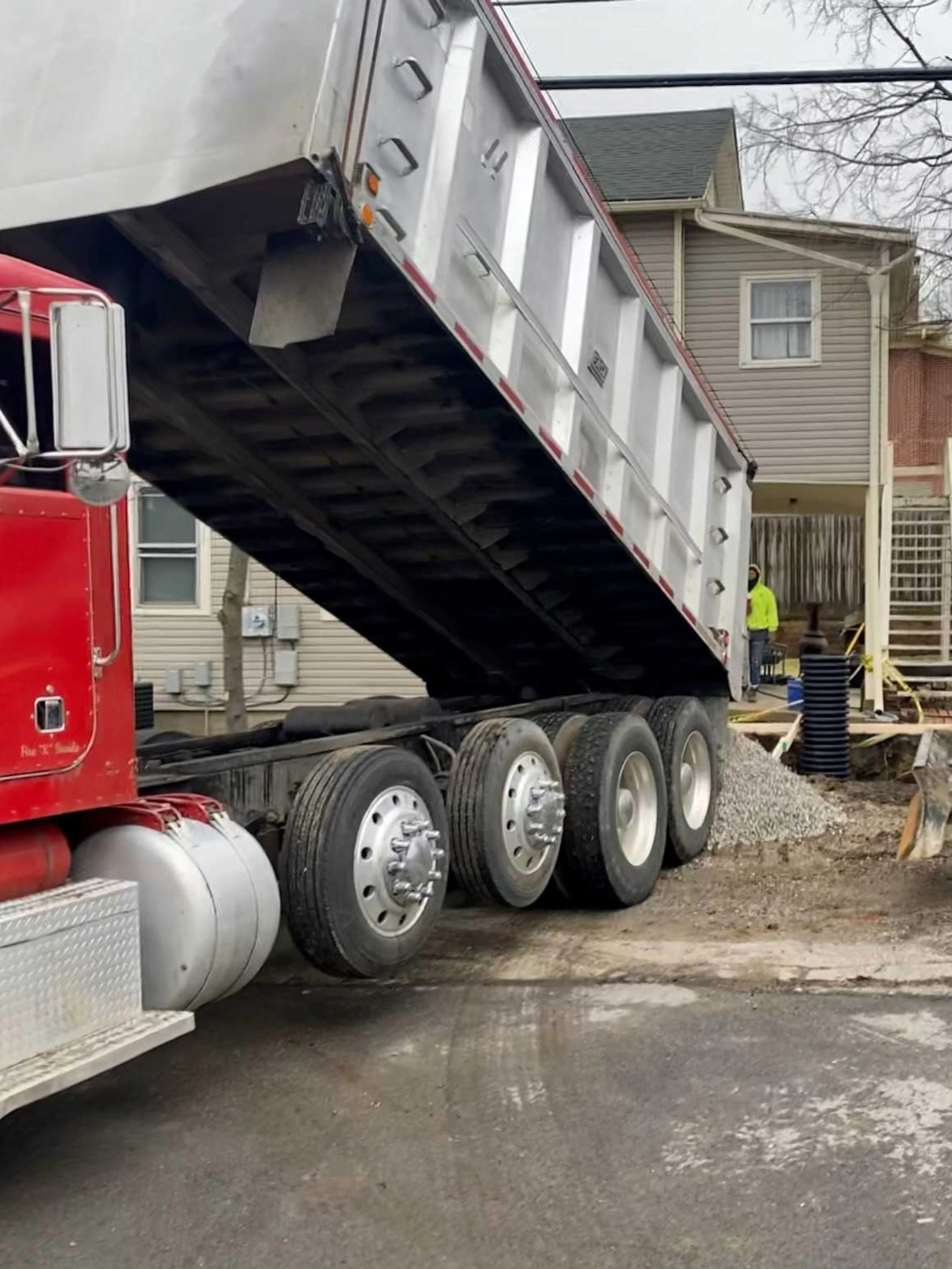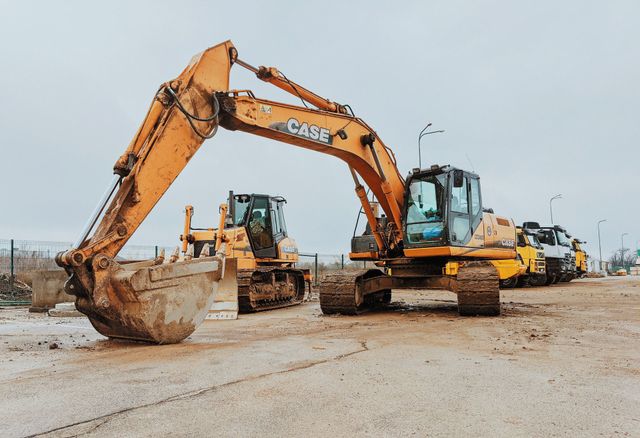Budget-friendly Lancaster Excavation - Quality Excavation at Competitive Costs
Budget-friendly Lancaster Excavation - Quality Excavation at Competitive Costs
Blog Article
Unveiling the Art of Excavation: Pro Tips for Safe and Productive Digging
As soil is transformed and earth is relocated, the complexities of excavation expose themselves, demanding a keen understanding of tools, soil make-up, safety and security methods, and ecological considerations. The know-how required to navigate these components efficiently can indicate the distinction between a successful excavation project and a possible disaster.
Value of Proper Equipment
To make certain the safety and security and performance of any kind of excavation job, making use of the proper tools is paramount. The right devices not just improve productivity however additionally minimize dangers connected with digging. Excavation jobs vary in extent and complexity, ranging from little residential landscape design work to large-scale building tasks. No matter the project size, having the correct devices can make a significant distinction in the end result.
Excavators are basic items of equipment in any type of excavating operation. These versatile devices been available in different sizes to suit various project demands. Small excavators are perfect for smaller tasks, while larger excavators deal with much more substantial tasks effectively. Backhoes are an additional crucial devices kind, integrating the features of a loader and an excavator in one machine. They are important for jobs requiring adaptability and maneuverability.
In addition to excavators, other crucial equipment includes dump plates, trucks, and excavators. Dump vehicles are essential for eliminating and carrying excavated products, while trenchers are used for excavating slim and deep trenches. Excavators master tasks that call for pushing big quantities of dirt or debris. By purchasing the proper equipment, excavation tasks can be finished securely, on schedule, and with precision.
Understanding Soil Structure
A comprehensive grasp of soil structure is fundamental for executing excavation tasks with accuracy and safety and security. Comprehending the various kinds of dirt is critical as it directly impacts excavation techniques, equipment selection, and general project effectiveness.
Silt fragments are smaller sized than sand however bigger than clay, offering modest drain and communication. Organic matter, such as decaying plant product, influences soil fertility and stability.
Before starting excavation, carrying out dirt examinations to determine its make-up and qualities is crucial. This info assists in picking the proper devices, implementing precaution, and developing excavation strategies customized to the particular dirt conditions - septic ohio. By recognizing soil make-up, excavation professionals can boost job end results while making sure safety and adherence to finest practices
Security Measures and Methods
Understanding dirt composition is the foundation whereupon safety actions and protocols for excavation tasks are built, making certain the well-being of employees and the success of the undertaking. There are a number of key steps that have to be executed to alleviate threats and avoid crashes. when it comes to safety during excavation.
Firstly, prior to any kind of digging commences, a complete examination of the website must be performed to identify any prospective risks such as below ground energies, unsteady dirt problems, or neighboring frameworks that can position a danger. It is important to have an experienced individual look after the excavation procedure to make certain that all safety and security methods are adhered to strictly.
Furthermore, all employees entailed in the excavation has to be effectively educated in secure excavating methods and the appropriate operation of equipment. By adhering to these safety measures and methods, excavation tasks can here are the findings be finished effectively and without incident.
Effective Excavation Preparation
When embarking on an excavation task, meticulous planning is crucial to guarantee efficiency, safety, and effective end results. Reliable excavation planning involves numerous essential steps that are important for the smooth more tips here execution of the project. The very first step is to perform a thorough website evaluation to identify any prospective risks, such as underground energies or unpredictable dirt problems. This details is essential for creating an in-depth excavation plan that consists of precaution and risk reduction techniques.
When the website analysis is full, the next action is to develop a clear timeline and schedule for the excavation activities. This consists of determining the sequence of jobs, tools requirements, and manpower allocation. Appropriate organizing aids avoid delays and makes sure that the task stays on track.

Furthermore, communication among all staff member is critical during the planning phase. Clear regulations, routine updates, and effective coordination are important for a successful excavation project. By investing time and effort in meticulous planning, excavation groups can dramatically boost performance, decrease threats, and accomplish effective results.

Handling Environmental Factors To Consider
With boosting emphasis on ecological sustainability in building practices, taking care of environmental factors to consider has come to be a i thought about this vital element of excavation projects. Excavation tasks have the potential to affect the surrounding environment via soil disintegration, sediment overflow, habitat interruption, and contamination of water resources. To alleviate these threats, it is necessary to apply finest practices that prioritize ecological defense.

Moreover, appropriate waste monitoring is vital to avoid dirt and water contamination. Applying treatments for the disposal of unsafe products, recycling of waste materials, and reducing the use of damaging chemicals can substantially lower the ecological influence of excavation tasks. By incorporating these methods into excavation planning and execution, construction firms can make sure that their jobs are not only risk-free and productive but additionally eco liable.
Final Thought
In final thought, grasping the art of excavation calls for a thorough understanding of proper devices, soil composition, precaution, and efficient planning. By complying with these guidelines and considering environmental factors, excavations can be carried out safely and efficiently. It is critical to prioritize security and efficiency in every excavating task to guarantee successful end results.
As dirt is transformed and planet is relocated, the intricacies of excavation disclose themselves, demanding an eager understanding of equipment, dirt composition, safety procedures, and ecological considerations.To ensure the security and effectiveness of any kind of excavation job, using the suitable tools is critical.An extensive understanding of dirt structure is basic for performing excavation tasks with accuracy and safety. Recognizing the various types of soil is critical as it directly affects excavation approaches, equipment selection, and general task efficiency. By comprehending dirt make-up, excavation professionals can improve project outcomes while guaranteeing security and adherence to ideal techniques.
Report this page